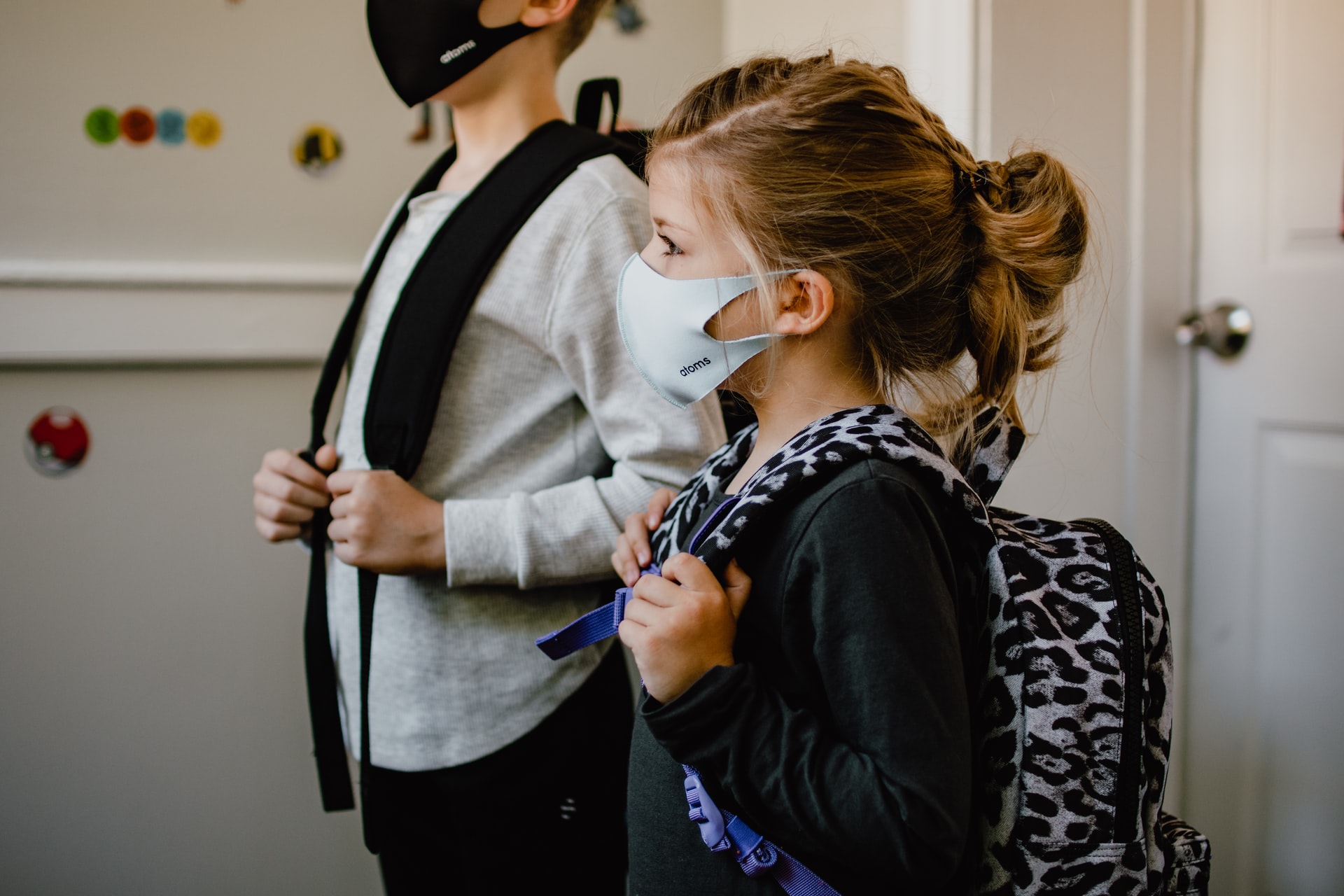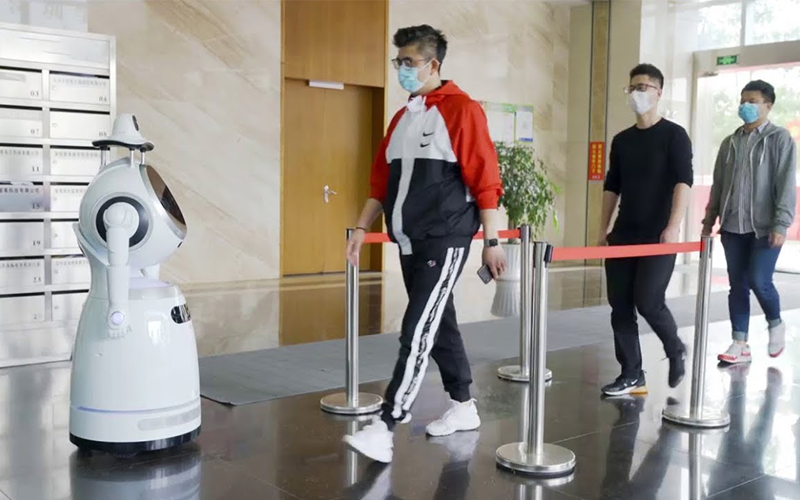By Steve Daniel, President, UV Health Group.
 Photo by Kelly Sikkema on Unsplash
Photo by Kelly Sikkema on Unsplash
Comparing the efficacy and value of HVAC, HEPA, and UVC systems is a good place to start when analyzing classroom air safety as in-person learning resumes.
Ensuring classroom air safety is more critical than ever this year–and every school year in the foreseeable future. As we prepare for a return to in-person learning for the 2021-2022 school year, discussions continue to focus on how schools will keep students and faculty safe from airborne COVID-19 and other viruses and pathogens.
The COVID-19 Delta variant and other numerous variants have the potential to cause localized outbreaks beyond student and faculty, infecting both vaccinated and unvaccinated populations. This is a permanent challenge for school districts–one that requires proven, long-term, cost-effective solutions. Just cracking the classroom window or increasing the HVAC airflow in schools won’t cut it.
There are three primary air purifying solutions on the market today, each with many options within their categories: HVAC system upgrades, HEPA filtration systems, and UVC germicidal lighting systems. Understanding the pros and cons of each technology can be overwhelming for educators and administrators looking for the best choice to protect their staff and students.
Unfortunately, not every vendor is as transparent as it should be about their true effectiveness and actual testing results. Some use overblown claims, putting educators and students at risk. Lean into that old adage “knowledge is power,” and research the basics of each technology before committing.
HVAC (Heating, Ventilation and Air Conditioning)
Most schools have HVAC systems, whether centralized or one for each classroom, which range from new to very old. These systems provide air circulation throughout the building, often pulling in fresh air from outside. HVAC systems may potentially move virus-infected air out of a room more quickly; however, the air may spread into adjacent rooms before exiting the building. This bad, infected air may also travel across the breathing space of others before it gets to a vent in the wall or ceiling.
HVAC systems circulate air via fresh air and return air ducts housed in the ceiling or walls of a room. In some HVAC upgrades, a UVC light can be integrated to help inactivate viruses in the circulating air. However, the high speed of the airflow and the resulting short amount of time the UVC light is able to contact the air make these systems far less effective.
Air purifiers with HEPA (High-Efficiency Particulate Absorbing) filters
HEPA filter-based air purifying systems work in a specific room by pulling air into a device typically parked along a wall or in a corner. These machines trap viruses, bacteria, and mold in HEPA filters as the air passes.
These types of air purifiers present some challenges for schools. Like HVAC systems, these devices don’t affect the air around people’s breathing space, as the intakes are often underneath the units at floor level, and the large, fast fans are frequently too noisy and create distractions during class. Due to the microscopic size of COVID-19 and other virus particles (as small as .01 micron), HEPA filters are not able to trap the smallest virus particles and can circulate the viruses back into and further around the room. Regular changing of used, hazardous HEPA filters also requires infectious waste protocols and planning for the costs of new filters and maintenance–an expense that can quickly add up. It is best to understand the five- and 10-year total cost of ownership of HEPA devices before committing.
UVC light fixtures (Ultraviolet light in the 200nm to 280nm wavelength range)
Known, proven science has shown that UVC light will inactivate all viruses. The options within the ultraviolet light space are vast, offering several options for schools. Systems that utilize UVC light work by exposing pathogens to a wavelength of germicidal UVC light that inactivates the DNA or RNA of these pathogens so they cannot further replicate and infect others.
These systems can be an effective, long-term solution for schools, as they can inactivate a wide range of pathogens regardless of particle size, variant, or type. If choosing a UVC solution, it is important to select a fully contained system unless it will be operating in a strictly unoccupied space to avoid damaging skin or eye exposure. Most modern systems use mercury-vapor 254nm bulbs, which typically need to be replaced every 6 to 12 months. The ongoing cost is a factor here; ownership over five or 10 years could double the school’s initial investment. The environmental impact of a large number of used UVC mercury-vapor bulbs ending up in your community landfills is another important consideration.
Newer options for fully contained UVC systems include long-lasting UVC LED chip technology, which offers a more powerful germicidal wavelength of UVC light (275nm). These fully contained systems will continuously clean air while class is in session. In general, these systems can offer the safest, most effective, and economical solution for continuous air safety.
Choosing a clean air solution to make the air safe for your institution can be challenging. I recommend four approaches to make the process as smooth and informative as possible:
-
Research your options and ask lots of tough questions of potential vendors.
-
Consider long-term cost-effectiveness, environmental impacts, and cost of each option.
-
Look for vendors that can substantiate, with proof, that their products have been tested with live airborne viruses (specifically the SARS-CoV-2 virus, the cause of COVID-19). A 99.999% reduction in viruses is far better than 99.9%.
-
Ensure that the most precious air in any room–the air at head level–is being quickly evacuated and cleansed with the air circulation capabilities offered by the different solutions.
As educators and administrators, the health and safety of your students are always at the front of your mind. Starting from that foundation and with the right research, you’ll be able to find a classroom air safety solution that works continuously and makes good economic sense. The right tools will deliver confidence for you, the faculty, staff, students, and parents in your community.
Learn more about how to keep schools virus-safe with RobotLAB!
Follow UNICEF's guidance on how to keep your school virus-free. Take action and join the schools that have moved forward and deployed robots to stop the pandemic, and make sure it won't come back!

